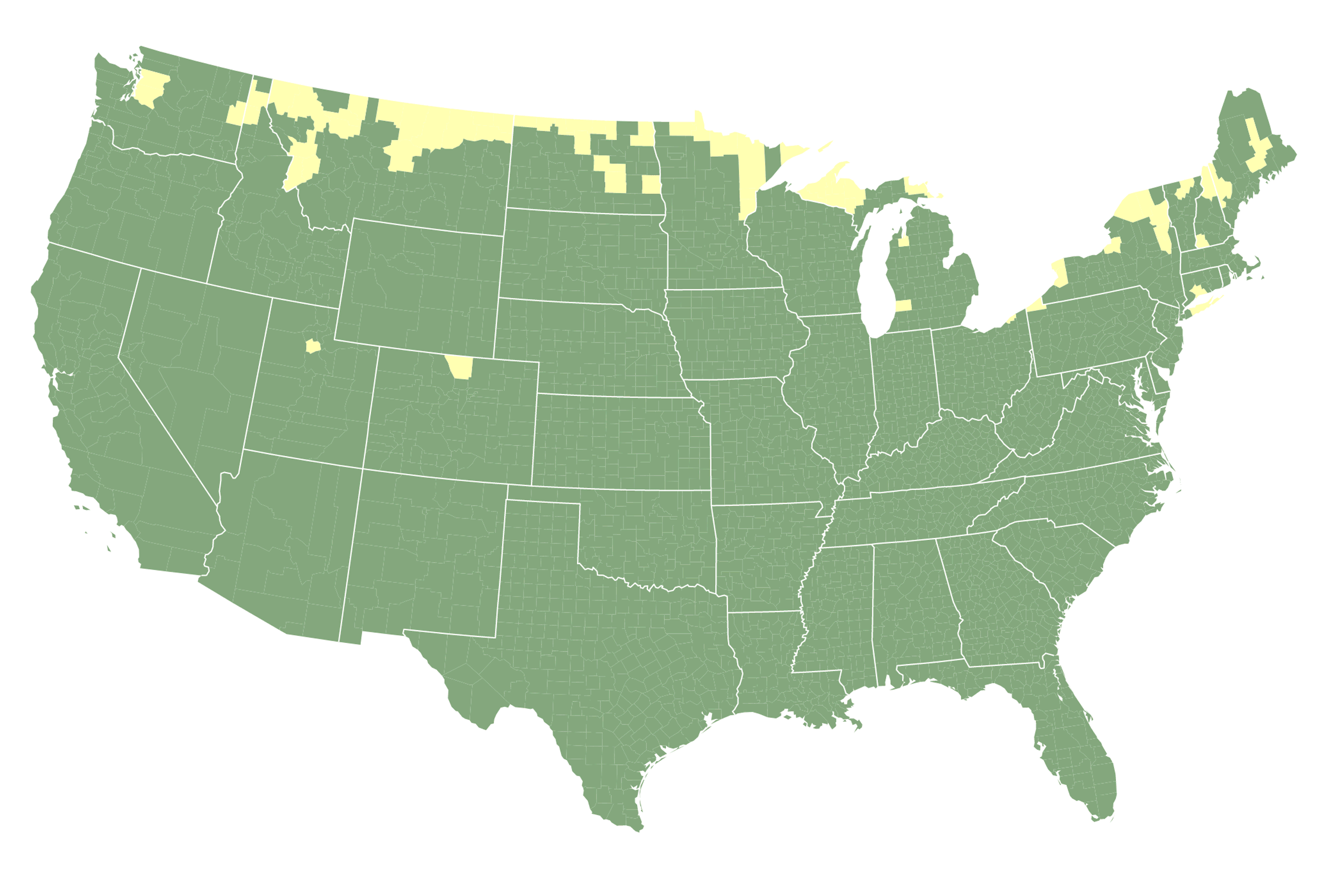Plants
Why Prehistoric Herders Didn't Spit Out Their Watermelon Seeds
Thousands of years ago, Saharans ate the kernels before the fruit became sweet
Charles Darwin's Rare Autographed Manuscript Could Sell for $800,000
The English naturalist was responding to a magazine editor who had asked for a handwriting sample
View 16 Breathtaking Images From the Nature Conservancy's Annual Photo Contest
The winning shots feature everything from glowing mushrooms to sauntering lions
Are Hybrid Grapes the Future of Wine?
Scientists, growers and winemakers are working with experimental varieties to adapt to the effects of climate change
This Interactive Map Will Help You Plan the Ultimate Leaf-Peeping Trip
Find the best times to admire fall colors across the country
A Brief History of Ireland's Carrageen Moss Pudding
The curious dessert—combining a seaweed found on the Emerald Isle's coast with dairy—lies in the hands of regular folks who enjoy a challenge
Why Do Some Humans Love Chili Peppers?
An anthropologist traces the origins and paths of one of his favorite kinds of plants
People Are ‘Hunting’ Invasive Spotted Lanternflies—and You Should, Too
Officials urge the public to squish the bugs, which are damaging crops and trees in the eastern U.S.
Cougars Are Killing Feral Donkeys, and That’s Good for Wetlands
Mountain lions play an important role in the Death Valley ecosystem by preying on the introduced species
Why Eelgrass in the Atlantic Ocean Faces an Uphill Battle
The Ice Age left the plant off our East Coast with less genetic diversity than its relative in the Pacific
Moths Are the Unsung Heroes of Pollination
New research suggests the insects play a more important role in pollinating red clover than scientists previously thought
The DNA of Hundreds of Insect Species Is in Your Tea
Minute remnants preserved among dried leaves might help scientists track pests and monitor population declines
Eight Superfoods That Could Future-Proof Our Diet
These climate-resilient crops could find more prominent placement on our plates in the next few decades
This New Species of Carnivorous Pitcher Plant Traps Its Prey Underground
Researchers discovered the new specimen in the rainforests of Borneo
New Species of Giant Waterlily Is the Largest in the World
The discovery of the enormous plant type surprised researchers
Human Pee Might Just Be the Key to Saving Seagrass
Treating wastewater creates struvite—a nutrient-rich crystal that bolsters struggling seagrass beds
Is Seaweed the Next Big Alternative to Meat?
From kelp burgers to bacon of the sea, sustainable food entrepreneurs are innovating to charm hungry omnivores
When Cats Chew Catnip, It Works as a Bug Spray
Plant leaves that repel mosquitoes release a more effective repellant after being crushed up by felines
World’s Largest Plant Is a Seagrass That Clones Itself
The 4,500-year-old plant lives off the coast of Australia
Scientists Prove That Plants Can Grow in Soil From the Moon
The experiment is a milestone in the path to helping humans one day experience extended stays on the lunar surface
Page 5 of 31
:focal(800x602:801x603)/https://tf-cmsv2-smithsonianmag-media.s3.amazonaws.com/filer_public/89/10/8910e784-4935-49f0-84c0-6efc18fbccbc/smithmag-watermelonseeds-v1_web.jpg)
:focal(2160x1440:2161x1441)/https://tf-cmsv2-smithsonianmag-media.s3.amazonaws.com/filer_public/00/44/004485d0-cb08-40b2-a8b8-621831cf7547/092322-mfm-darwin-004_1.jpg)
:focal(2000x1124:2001x1125)/https://tf-cmsv2-smithsonianmag-media.s3.amazonaws.com/filer_public/55/9d/559d6879-c91b-4b51-b7a6-43e7b4dde34e/hm_wildlife_jenny_zhao.jpg)
:focal(800x602:801x603)/https://tf-cmsv2-smithsonianmag-media.s3.amazonaws.com/filer_public/84/68/846808d6-343a-480b-b0ab-0a5e09dd89ab/img_2588_web.jpg)

:focal(1250x839:1251x840)/https://tf-cmsv2-smithsonianmag-media.s3.amazonaws.com/filer_public/1f/bc/1fbc1436-e064-489a-a1bb-3ee602ddcd62/dried-carrageen-irish-seaweed-pudding.jpg)
:focal(800x602:801x603)/https://tf-cmsv2-smithsonianmag-media.s3.amazonaws.com/filer_public/61/1c/611c45f3-4501-4b60-bb13-55dfaf852d2d/gettyimages-88771222_web.jpg)
:focal(2715x1838:2716x1839)/https://tf-cmsv2-smithsonianmag-media.s3.amazonaws.com/filer_public/de/f4/def40b1f-27f9-4e9a-a1fb-44f124003829/43927532534_1237e78fd9_o.jpg)
:focal(800x602:801x603)/https://tf-cmsv2-smithsonianmag-media.s3.amazonaws.com/filer_public/1f/e7/1fe7633a-4a18-4d9d-a705-b2cd7fb23a5a/alfuso_9_resized.jpg)
:focal(800x602:801x603)/https://tf-cmsv2-smithsonianmag-media.s3.amazonaws.com/filer_public/32/2a/322aba99-4d9c-49e4-8c1a-f323fd8277a4/zostera_web.jpg)
:focal(1716x1482:1717x1483)/https://tf-cmsv2-smithsonianmag-media.s3.amazonaws.com/filer_public/08/b2/08b2df47-9fc2-4df5-8b08-fe46d54ebf16/noctua_pronuba_lodzpoland11js.jpeg)
:focal(800x602:801x603)/https://tf-cmsv2-smithsonianmag-media.s3.amazonaws.com/filer_public/29/49/29490ce0-90b6-460f-83a4-52003a4ce630/tea_bag_photo.jpeg)
:focal(1062x708:1063x709)/https://tf-cmsv2-smithsonianmag-media.s3.amazonaws.com/filer_public/c5/86/c5869fd2-da47-437a-9643-40af86350122/gettyimages-148755331.jpg)
:focal(1440x1920:1441x1921)/https://tf-cmsv2-smithsonianmag-media.s3.amazonaws.com/filer_public/8b/fa/8bfa67ae-6953-4c47-b5f4-fe9a235b555d/image_4.jpg)
:focal(4128x2752:4129x2753)/https://tf-cmsv2-smithsonianmag-media.s3.amazonaws.com/filer_public/9a/5a/9a5a55da-9df8-45f5-abd3-6d4df675436f/isd_01072021_4451_giant_waterlily_photoshoot-min.jpeg)
:focal(1061x707:1062x708)/https://tf-cmsv2-smithsonianmag-media.s3.amazonaws.com/filer_public/59/1c/591ca8b1-1be2-48da-a86d-ae4b647dbf75/gettyimages-1298836217.jpg)
:focal(990x752:991x753)/https://tf-cmsv2-smithsonianmag-media.s3.amazonaws.com/filer_public/59/2e/592e8095-bb8e-4cb9-a9df-98d1a0e45535/weed_burger-tdwb-2.jpg)
:focal(800x602:801x603)/https://tf-cmsv2-smithsonianmag-media.s3.amazonaws.com/filer_public/0e/1e/0e1e3de2-75e9-497e-88a0-3633a6c6873b/catwithsilvervine_web.jpg)
:focal(472x261:473x262)/https://tf-cmsv2-smithsonianmag-media.s3.amazonaws.com/filer_public/8c/7c/8c7cc1fe-585b-4efc-9af7-d20bde8e55cd/seagrass_card_-_944x522_copy.jpg)
:focal(474x328:475x329)/https://tf-cmsv2-smithsonianmag-media.s3.amazonaws.com/filer_public/93/17/9317ab30-0492-48f0-a41d-ada950601b1d/plants_in_soil_from_the_moon5.jpg)